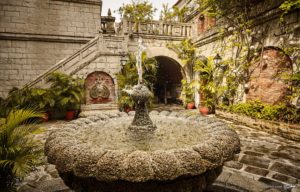
Casa Manila: Unveiling Spanish-Filipino Heritage Through Historical Charm
Casa Manila is a living museum that features the lifestyle of a wealthy Filipino family living during the last years of the Spanish colonial period,
Located on Mendiola Street in the heart of Manila, the Abbey of Our Lady of Montserrat, commonly known as Manila Abbey, is a significant spiritual and historical landmark. Founded in 1895 by Spanish Benedictine monks during the twilight of the Spanish colonial era in the Philippines, the Abbey stands as a testament to the enduring legacy of Spanish religious influence in the archipelago.
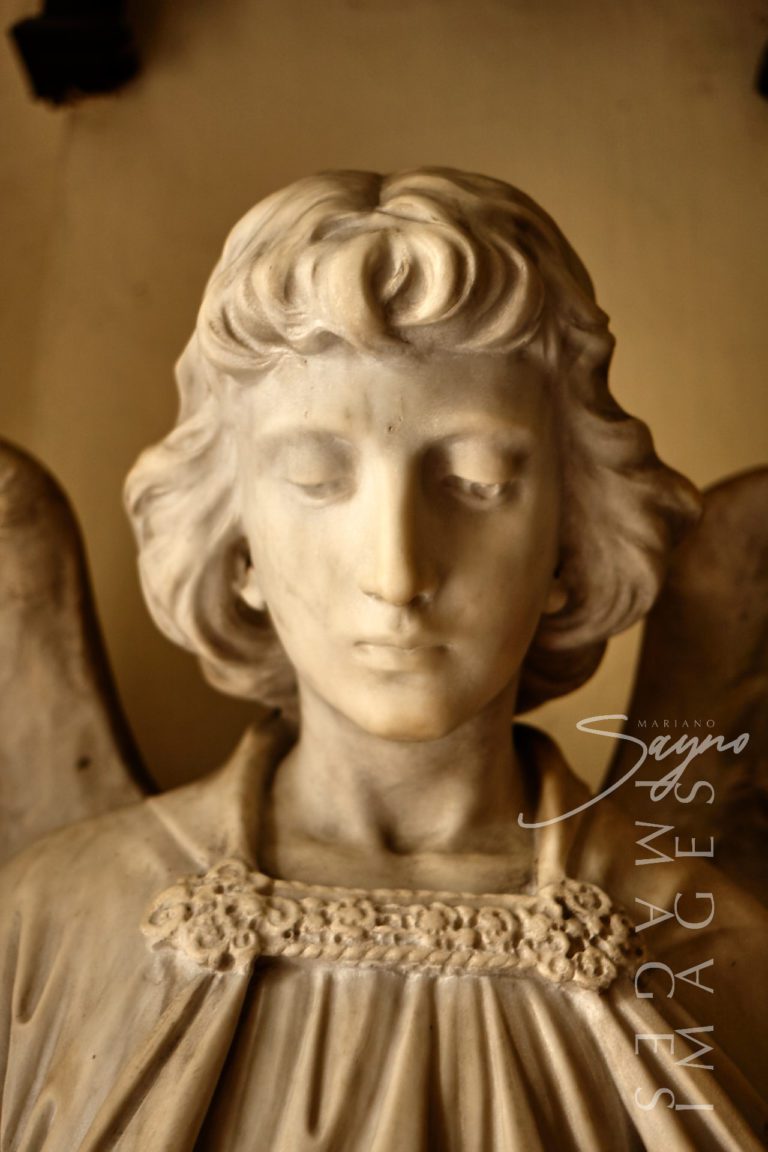
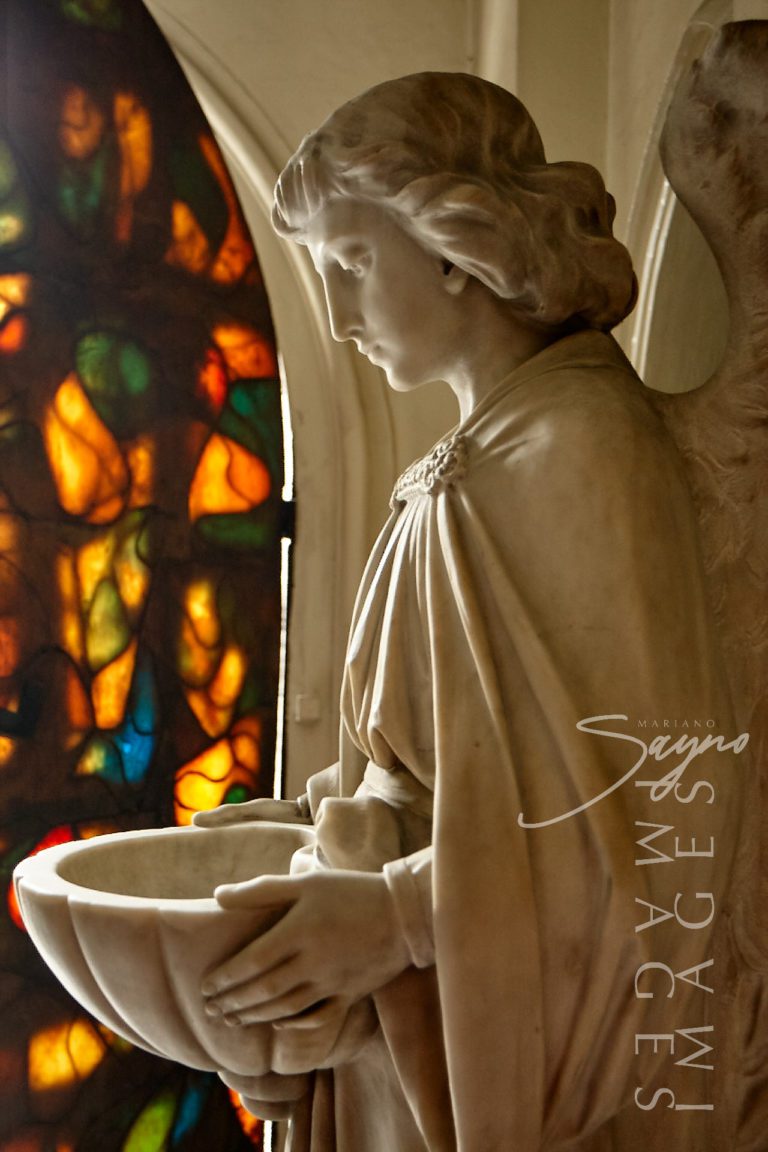
In the 19th century, Spain’s anti-clerical governments enacted policies to suppress monastic communities, either closing them outright or preventing them from accepting new members. This was intended to let these communities gradually die out. However, exceptions were made for monasteries willing to establish missions in remote areas of Spain’s former empire, such as the Philippines. Consequently, the ancient Benedictine Abbey of Our Lady of Montserrat near Barcelona decided to establish a mission in Manila. This mission aimed to adopt the agrarian lifestyle promoted by the newly formed Subiaco Congregation and to provide pastoral care to the local population. On September 12, 1895, eight choir monks and six lay brothers, led by Dom José Deas y Villar, arrived in Manila. After being hosted by the local Jesuit community, they secured property for their new mission.
The American occupation of the Philippines, which began in 1898 during the Spanish–American War, dramatically altered the monastery’s situation. The loss of financial support from the Spanish crown left the newly established community in a precarious position. To counteract the influence of Protestant missionaries who arrived with the American administration and to secure their own future, the monks chose to focus on education. On June 17, 1901, they opened San Beda College on Arlegui Street, named after the great English Benedictine scholar and saint, the Venerable Bede. The college offered elementary, secondary, and initial university studies, with graduates earning either a Bachelor of Arts degree or a diploma in business. By 1906, the college was accredited and affiliated with the Pontifical University of Santo Tomas.
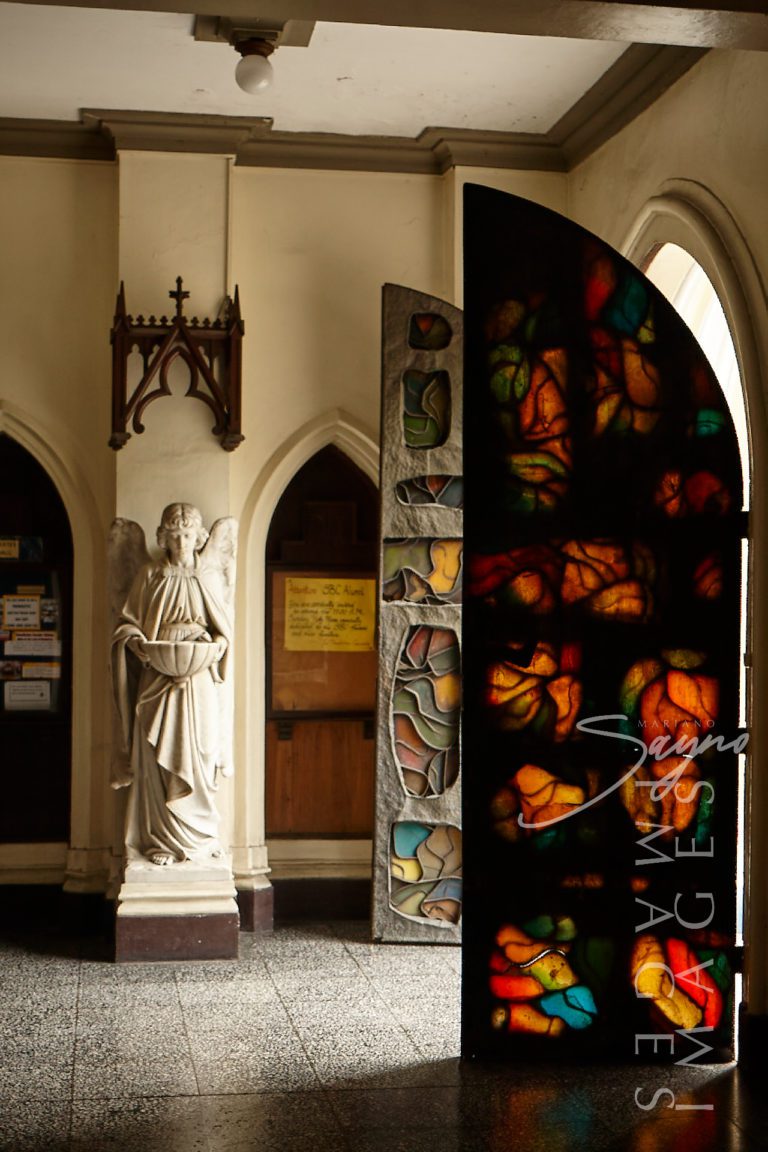
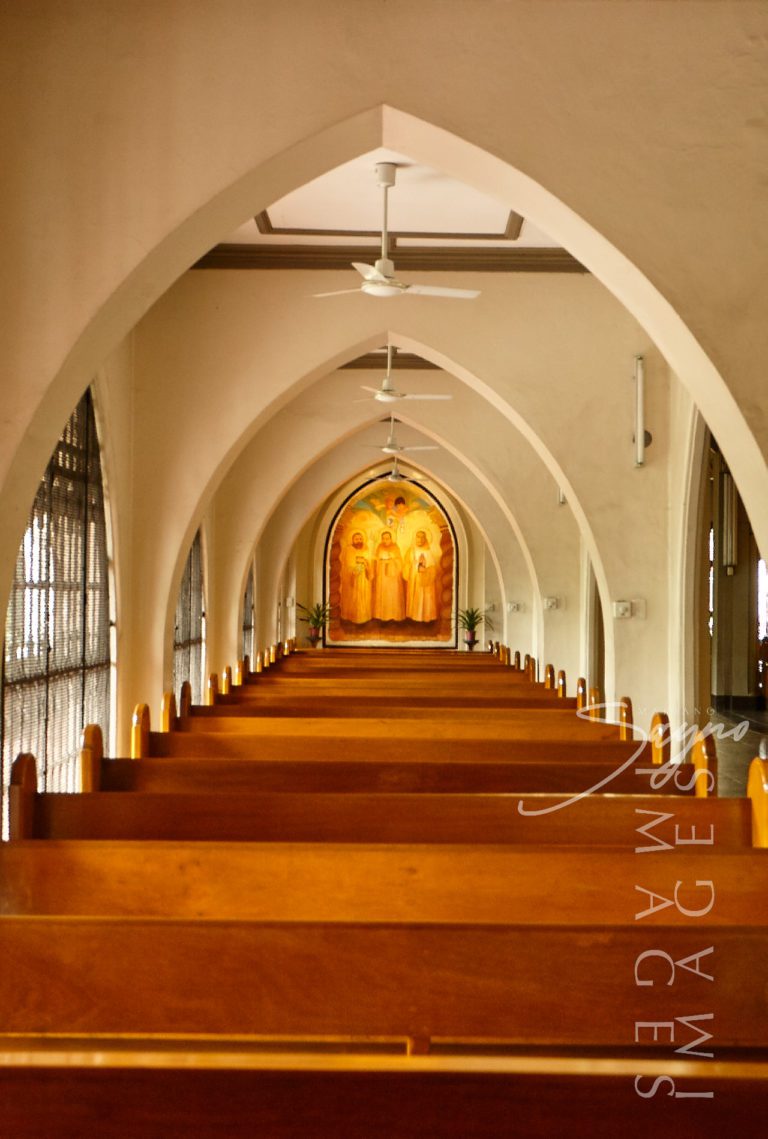
As the monastery grounds became overcrowded, the monks acquired land on Mendiola Street. In 1909, they entrusted the pastoral care of the region to the Missionaries of the Sacred Heart from the Netherlands and relocated to their current site, expanding the property in 1918. The cornerstone of the abbey church was laid on February 15, 1925, and the church was completed and consecrated on January 13, 1926, to the Infant of Prague.
The abbey church, designed with a Neo-Gothic exterior and a Neo-Baroque interior, reflects a blend of traditional and contemporary influences. The interior was painted by Dom Lesmes López and Brother Salvador Alberich from Spain between 1931 and 1939. Dom Lesmes López’s works include elaborate paintings on the vaulted ceiling of the nave, featuring 16 allegories of virtues, theology, and the church. The sanctuary is adorned with “The Apotheosis of the Holy Name of Jesus,” and the church’s walls display eight panels depicting the Nativity of the Lord. Additionally, paintings of the Stations of the Cross are incorporated into the church’s interior design.
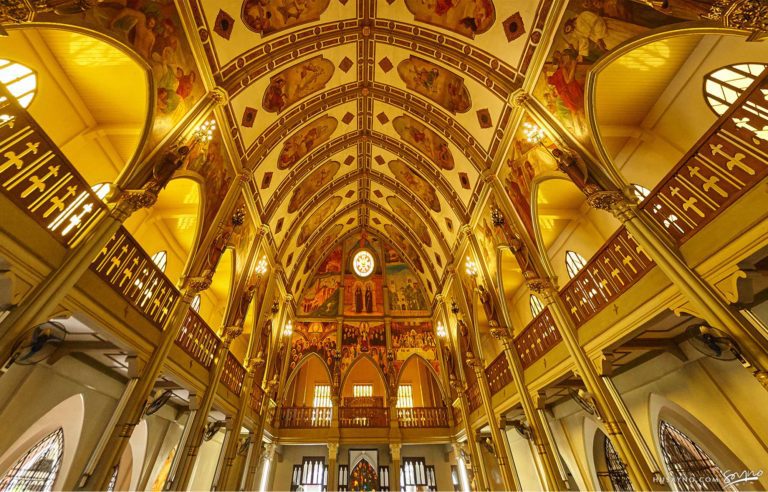
In the altar retablo, a statue of the Holy Infant of Prague is enshrined in a beautifully carved cedar wood retablo, adding to the church’s spiritual and artistic significance. In 2010, Aelred Nilo designed a final mural to complete the back wall of the nave. This mural, executed by the Italian painter Francesco Giannini on 126 square meters of jute canvas, depicts the history of the present congregation, alongside the resurrected Christ, various saints, and other religious figures, some of which are based on real-life photographs.
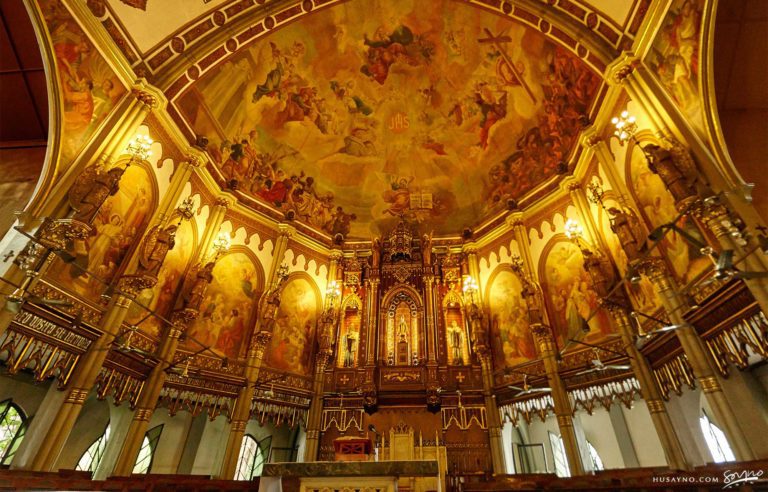
In 1939, the National Historical Commission of the Philippines installed a marker at the Abbey, serving as a graceful tribute to its storied past. This marker stands as a testament to the rich historical heritage of the Philippines and the Abbey’s enduring legacy.
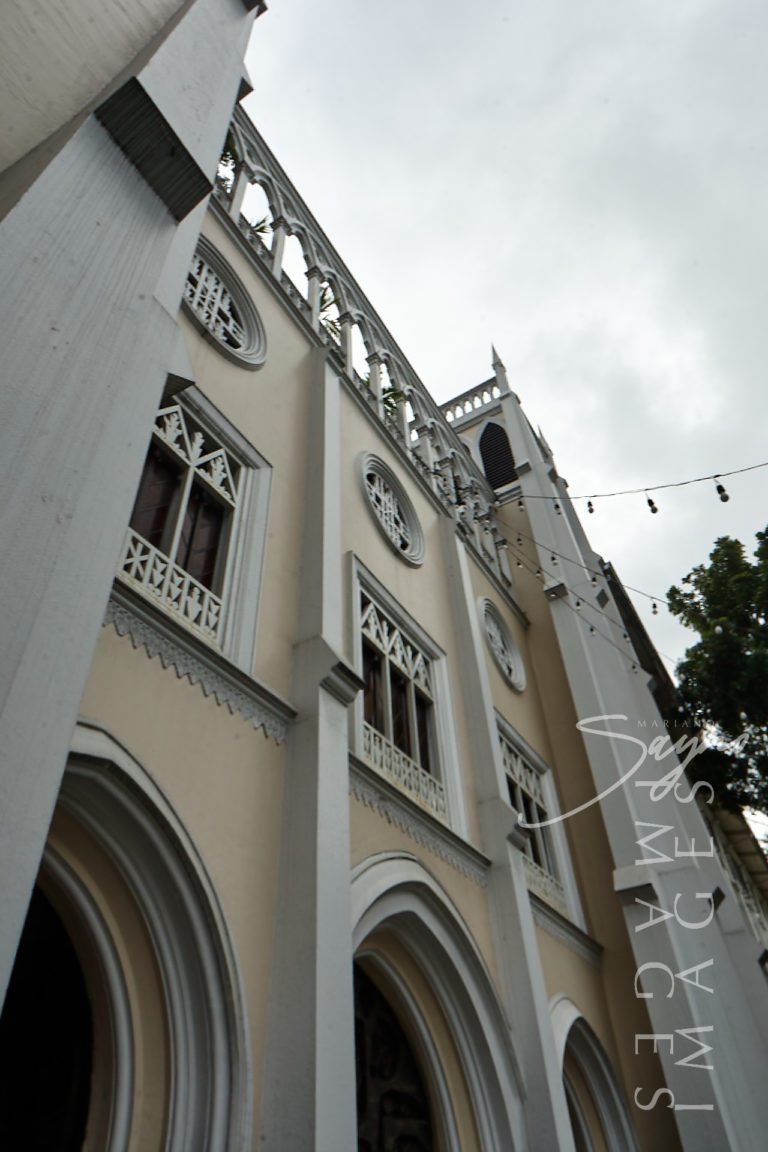

Through its rich history and ongoing contributions, Our Lady of Montserrat Abbey remains a cherished institution in Manila. It bridges centuries of faith, education, and cultural heritage, maintaining its role as a cornerstone of the community and a symbol of enduring spiritual and educational values.
RELATED STORIES

Casa Manila is a living museum that features the lifestyle of a wealthy Filipino family living during the last years of the Spanish colonial period,

The Bonifacio Monument, also called Bonifacio Monumento or Monumento, proudly stands in Caloocan City, Metro Manila. It is a powerful symbol created by the National
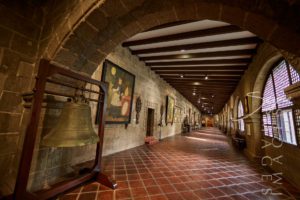
The San Agustin Museum is located adjacent to the UNESCO World Heritage Site, San Agustin Church. It is located in Intramuros—the walled city of Manila—and
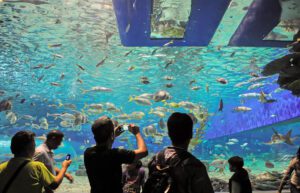
As the nation’s first ever world-class marine theme park, Manila Ocean Park is located in Ermita Manila, within the Philippines’ largest urban resort/aqua-themed hotel complex
I’m looking forward to the stories and images leaving a lasting positive impression on you, just as they have on me. Stay connected with us on social media for a weekly exploration of travel assignments and breathtaking visuals. Our focus is on championing local tourism, showcasing small businesses, and honoring the magnificence of the Philippines through the content we curate. Join us in spreading the word by clicking the ‘share’ buttons below. Your support means the world to us.
EXPLORE MORE about
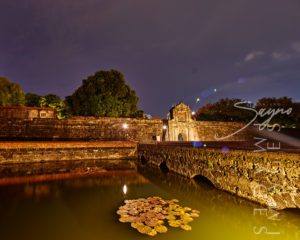
It is also known as the Walled City, and during the Spanish Colonial Period it was synonymous with the city of Manila. Intramuros was also
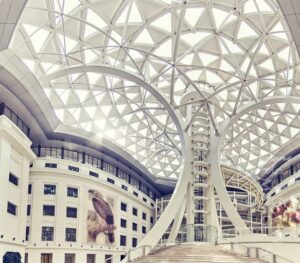
Explore the vibrant tapestry of Manila through its four national museums, each a unique gem in the city’s cultural crown. These four distinguished establishments are
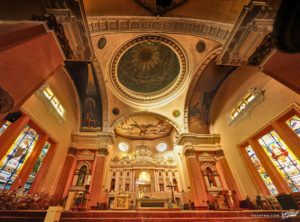
The Binondo Church is a historic church in Manila, located in the District of Binondo, near the Plaza San Lorenzo Ruiz. It was previously called

UST, also known as the University of Santo Tomas, is a private Roman Catholic university located in Sampaloc, Manila. It was founded on 28 April
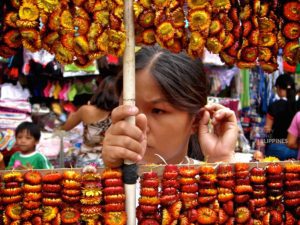
Plaza Miranda is a public square bounded by Quezon Boulevard, Hidalgo Street and Evangelista Street in Quiapo, Manila. It is the plaza which fronts the

As the nation’s first ever world-class marine theme park, Manila Ocean Park is located in Ermita Manila, within the Philippines’ largest urban resort/aqua-themed hotel complex
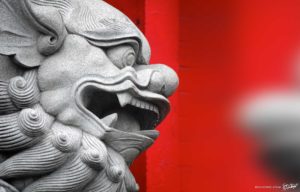
In addition to being considered the oldest Chinatown in the world, Binondo Chinatown is also the center of trade and commerce in Manila City. In

I experienced the vibrant and colorful life of downtown in full. I took some time to appreciate the beauty of Santa Cruz Church and Plaza
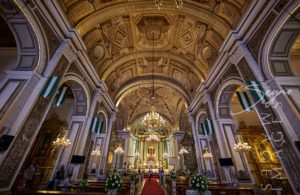
Known as one of the most important baroque churches in the Philippines and as one of the only four baroque churches in the Philippines that
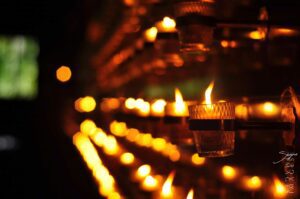
The Padre Pio Chapel, also known as the St. Pio of Pietrelcina Chapel, holds a special place in my heart as a photographer. It revealed

The Bonifacio Monument, also called Bonifacio Monumento or Monumento, proudly stands in Caloocan City, Metro Manila. It is a powerful symbol created by the National
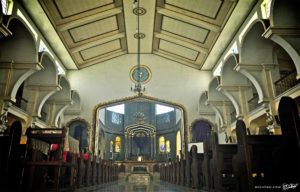
The Polo Church, formally known as the San Diego de Alcala Church, resides in the Polo neighborhood of Valenzuela, Manila. This church has a captivating
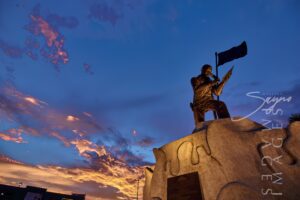
The Andres Bonifacio Birthplace Monument in Tutuban, Divisoria stands as a powerful symbol of Filipino patriotism and a tribute to the courage and leadership of Andres
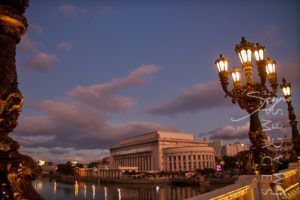
The Manila Post Office, officially known as the Manila Central Post Office, is a distinguished example of neoclassical architecture, originally designed by Juan M. Arellano,
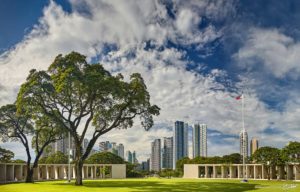
Manila American Cemetery and Memorial is located in the heart of Taguig City on the lands of Fort Bonifacio and serves as the largest grave
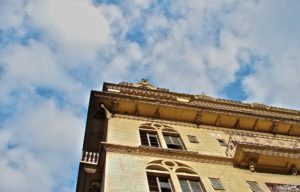
It is always a surprise for buildings, parks and houses to survive such wars as it is almost inevitable that everything will be brought down
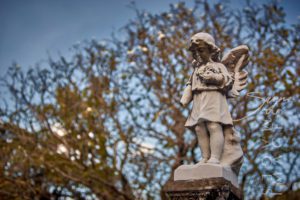
As one of the oldest cemeteries in Manila, Campo Santo De La Loma, commonly referred to as the La Loma Cemetery, is one of the
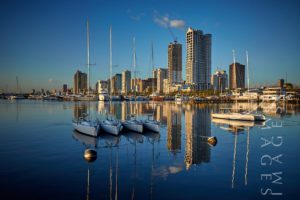
It is considered to be one of the world’s great harbors, the Manila Bay, and it serves as the Port of Manila, Philippines. Having once
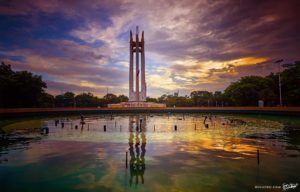
One of Quezon City’s main parks is the Quezon Memorial Circle, which is located in Quezon City and is surrounded by an elliptical road, making
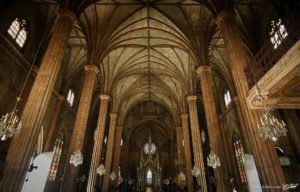
San Sebastian Church is a Roman Catholic Minor Basilica located in Quiapo, Manila. It’s also known as Minor Basilica of San Sebastian or San Sebastian

The San Agustin Museum is located adjacent to the UNESCO World Heritage Site, San Agustin Church. It is located in Intramuros—the walled city of Manila—and
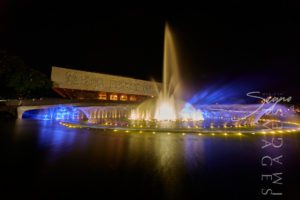
The Cultural Center of the Philippines or CCP was founded in 1966 under the directive of former President Ferdinand Marcos, in order to reinforce and
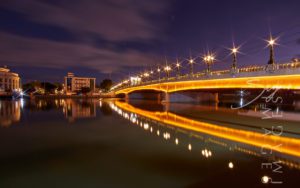
The newly restored Jones Bridge is easily recognizable by its beautifully designed black lamp posts—the same ones that were there when the bridge was first
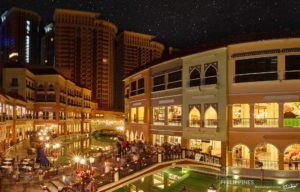
Located in the heart of the Taguig City, the Venice Grand Canal is a lifestyle mall development under the Megaworld Lifestyle Malls Located inside the
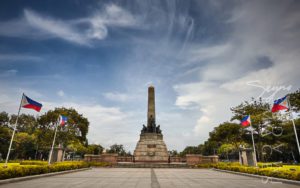
Located along Roxas Boulevard, Manila and adjacent to the century-old walled city of Intramuros, the Luneta National Park, or “Luneta” as many refer to it,

Originally built in 1880, the Manila Cathedral is the current version of the longstanding Church of Manila. It is a masterpiece of architecture that was
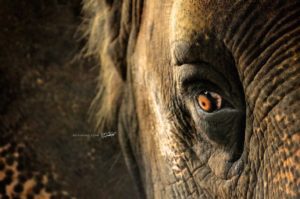
It is the home of the popular Asian elephant, Mali, as well as 90 other species. As well as being a landmark in Manila, the

Casa Manila is a living museum that features the lifestyle of a wealthy Filipino family living during the last years of the Spanish colonial period,

The Philippine International Convention Center (PICC) stands as a monument to the Philippines’ ambition to be a key player on the global stage. With its
BROWSE BY CATEGORIES